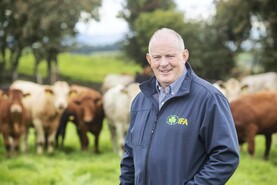As we prepare to start another year, we face more changes than for a very long time. Two of the changes will have fundamental long-term consequences for the farming business.
The areas fundamentally affected are beef and land use.
On the land use side, after a lot of thought and examination, we have given an option to a solar company to develop a solar farm on a significant portion of the land.
Apart from the negotiated rental level, which would if the project reaches fruition give a far higher return than is even remotely achievable from a beef/tillage operation, the change in government policy in allowing the agricultural relief for capital acquisitions tax apply to solar developments as long as less than 50% of the land is involved was pivotal.
We had, as I mentioned a few years ago, many approaches from potential developers. I presume one of the attractions of the farm is that there is a small ESB transformer station on the farm.
We have ended up signing with one company so we will see how it goes.
Beef enterprise
The second fundamental change is in the beef enterprise. The change to predominantly dairy-bred steers from high-producing bulls from the suckler herd marks, in my view, a change for much of the Irish beef farming sector. Instead of aiming for the top end of the European market, we are instead catering for the mass mince commodity outlets.
There is nothing intrinsically wrong with that but it marks, at least for our farm, a fundamental shift which will be accentuated by whatever the eventual outcome of the Brexit negotiations throws up.
The key question, of course, is how far can we cut costs to ensure we earn a margin.
On a more normal level, we will – during the course of the first quarter of the year – have to see if we can finish our winter sowing after we had to admit defeat in the face of water-logged soils in early November. We will be governed completely by the weather conditions over the next eight weeks or so. Plan B is a regime of spring cereals.






 This is a subscriber-only article
This is a subscriber-only article










SHARING OPTIONS: